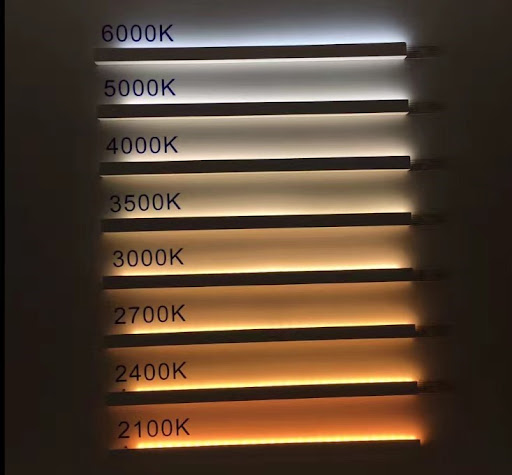Introduction: Where Lighting Meets STEM
STEM education (Science, Technology, Engineering, and Mathematics) emphasizes practical, interdisciplinary learning that prepares students for real-world innovation. Lighting design—especially modern LED systems—presents a perfect intersection of all STEM fields. By engaging with light, students explore physics, electronics, programming, environmental sustainability, and design thinking in a tangible and impactful way.
Whether adjusting a desk lamp’s brightness, programming color transitions, or analyzing urban light pollution, lighting allows learners to see the immediate effects of their engineering efforts. It is a bridge between theory and the world they live in.
I. Why Lighting Belongs in STEM Classrooms
1. Real-World Relevance
Lighting is an everyday necessity. From overhead classroom lights to smartphone flashlights and smart home systems, its omnipresence means students can relate directly to what they’re learning. Projects involving lighting technology build concrete understanding of abstract scientific principles.
2. Natural Interdisciplinary Integration
Lighting studies offer a unique opportunity to combine STEM elements seamlessly:
Science: Properties of light, reflection, refraction, color mixing, wavelengths
Technology: LED functionality, microcontrollers, sensor interaction
Engineering: Fixture structure, circuitry, power distribution, control systems
Mathematics: Calculating angles, illuminance, power efficiency, data analysis
3. Creativity and Ethical Awareness
Lighting projects allow students to create aesthetically and functionally impactful designs while considering social and environmental implications such as energy efficiency and light pollution. It fosters responsible innovation.
II. Project-Based Learning Examples
Case 1: Smart Desk Lamp with Arduino and LED Strip
Middle school students can design and build a programmable desk lamp using an Arduino UNO board, an RGB LED strip, and a light sensor. The lamp adjusts brightness based on ambient light and changes colors for different study modes. Through this, students explore analog and digital signals, basic coding, and human-centered product design.
Case 2: Exploring Color Temperature and Cognitive Performance
High school students test how different color temperatures (e.g., 2700K, 4000K, and 6500K) affect reading speed, comprehension, and fatigue. Students measure their own productivity under different lighting conditions and present findings using graphs and statistical analysis, introducing them to experimental methods and human factors engineering.

Case 3: Simulating Urban Light Pollution
Students use 3D modeling tools such as SketchUp and simulation platforms like LightStanza to model city lighting scenarios. By measuring light spread, sky glow, and environmental impact, students engage in ecological engineering and urban planning while applying data visualization and optics.

III. Classroom Integration Strategies
1. Build a “Lighting Maker Corner”
Equip a space in the lab or classroom with LED modules, microcontrollers, diffusers, and power sources. Give students the freedom to experiment with building their own lights, diffusing beams, or programming color sequences. This area fosters spontaneous exploration and iteration.
2. Use Modular STEM Kits
Numerous education kits make implementation simple. Options such as Grove kits, Arduino-compatible RGB strips, or programmable light boards are ideal for middle to high school students. These tools reduce prep time and align with inquiry-based learning frameworks.
3. Combine with Campus Sustainability Projects
Students can conduct audits of lighting systems in school corridors or libraries, and propose energy-efficient replacements. Integrating lighting projects with real school infrastructure instills ownership and a sense of social impact.
IV. Assessment and Outcomes
Lighting-based STEM projects should be assessed on multiple levels:
Technical Proficiency: Code functionality, circuitry, accuracy
Interdisciplinary Understanding: Application of physics, math, and engineering concepts
Process Documentation: Clear design steps, testing, iteration records
Communication: Presentation, collaboration, and problem-solving articulation
Social Impact: Consideration of sustainability, accessibility, and usability
Rubrics from project-based learning (PBL) frameworks are highly adaptable for evaluating lighting projects.
V. Future Perspectives
As intelligent lighting systems, IoT integration, and responsive design become standard, students familiar with these technologies will be well-positioned for careers in engineering, architecture, and technology. Lighting projects will soon become essential in STEM learning environments—not only illuminating ideas, but powering the minds of the next generation of innovators.
READ MORE:





Blue Sea Lighting is an enterprise with rich experience in the integration of industry and trade in stage lighting and stage special effects related equipment. Its products include moving head lights, par lights, wall washer lights, logo gobo projector lights, power distributor, stage effects such as electronic fireworks machines, snow machines, smoke bubble machines, and related accessories such as light clamps.
Quick Links
For more questions subscribe to our email








